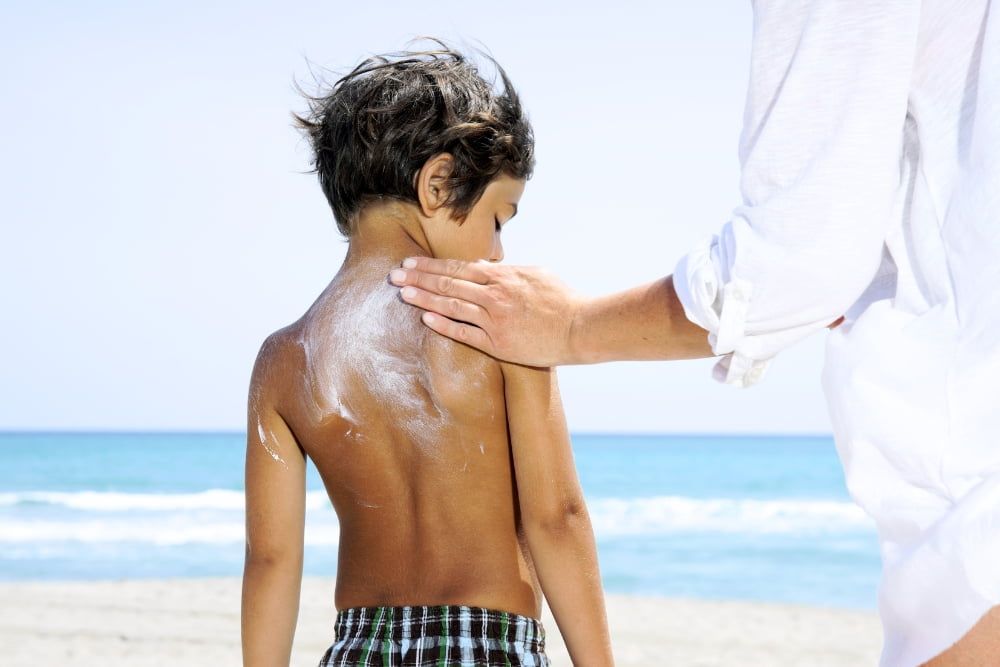Children's Skin and Sun: Bad Combination
Sun and the skin of children are not friends. As important as the sun is for all living creatures on earth, as dangerous it is for the sensitive skin of children. The best advice on how to effectively protect the little ones from the sun, is presented the following article.
Strictly speaking, young children should not be exposed to the sun. The reason is simple. Children's skin has a different structure than that of adult skin, as the skin of children is still in its developing phase:
Children's skin has distinctively weaker self-protection. In addition, children's skin is thinner and more sensitive. When adult skin is in contact with direct sunlight, it produces a skin pigment called melanin - skin becomes darker during summer and is partially protected from UV radiation. However, children's skin only produces melanin in very small amounts, that is not adequate to partially protect the skin from the UV rays. The acid mantle in children is not well-developed as yet and the function of the sebaceous glands is still very weak. All these factors combined prove why children should be protected from the sun and its UV rays.
Rules to be Considered
Children who are a year or younger, may not be exposed to the blazing sun. Ensure that there is always adequate shade. An umbrella is a good investment.
An SPF of 30 already guards off 95 percent of UVB radiation. This means that sunscreens with higher sun protection factors only differ marginally. It is important to reapply sun protection regularly, at two-hour intervals, to avoid the loss of their effect.
During 11 am and 3 pm, the sun is at its most intense. Children should remain in the shade at midday.
Clothing is the most effective form protection. The best pick is garments that are breathable and have built-in sun protection. If this is not the case, sun protection should be applied despite the clothing.
A headdress is very important and provides protection against sunburn and sunstroke. Let your little one choose their own head gear to ensure they'll have no problem wearing it afterwards. It is important that hats and caps have a wide brim, for the protection of both the face and the neck.
Sunglasses are also a good idea. Intense solar radiation strains the eyes and harms them. They may begin to burn, causing inflammation.
Be generous when applying sunscreen, rather than risk getting a sunburned. Also, ensure that children do not spend an exceedingly long time in the sun. After about ⅔ of the time that they are protected, you should bring them back into the shade, just to play it safe. Also, it is important to note that sun protection products do not take immediate effect. Apply the sun protection cream or lotion in a timely fashion about 30 minutes before sun exposure.
Always use water-resistant sunscreen when in contact with water or swimming. Reapply the cream or lotion after every session in the water. Between spending time in the water and drying, the sun protection factor partially decreases.
When deciding on a sunscreen, you have the choice between two different types of filters: chemical or mineral filters. Both these filters have advantages and disadvantages:
Chemical filters are absorbed by the skin and form a protective mechanism on the skin's surface. Minerals filters remain on the skin surface, are not absorbed, and reflect the sunlight away from the skin. Sunscreens containing mineral filters then to be better for children suffering from skin ailments such as atopic dermatitis, or allergies. Due to the fact that these mineral filters are not absorbed by the skin, they are not able to irritate it.
Many chemical filters are suspected to have similar effects to hormones in the body. Certified natural cosmetics only mineral filters in the production of sunscreen. These are more difficult to smooth over, causing a white layer on the skin that may disturb some people. This ensures whether or not the sun protection was indeed applied all over the body.
Not all outstanding issues have not been clarified regarding mineral filters. Mineral filters are often used in the form of nanoparticles. Nanoparticles are 1 to 100 nanometers in size. One nanometer is a millionth of a millimetre. For comparison sake: A hair on a human's head is about 80,000 nanometers thick. According to the current state of research, nanoparticles are considered safe when used at a concentration of up to 25 percent as UV filters in sun protection products, as shared by the Committee on Consumer Safety in the European Union. Nanoparticles become hazardous to health when they are inhaled into the lungs. Pneumonia or even worse illnesses can result from this. It is thus better to use sun protection creams and lotions instead of spray. Since 2013, nanoparticles must be listed in the Inci (ingredients).
Lastly: Ensure that your children are well hydrated and have plenty to drink when running around in the sun. Always have water, unsweetened fruit juices, herbal teas or diluted fruit juices at hand.
Do not forget: Getting sunburn as a child causes the most damage and children must be protected from the effects of the sun at all times. With every sunburn that occurs during childhood, the risk of skin cancer increases.
Latest reviews
-
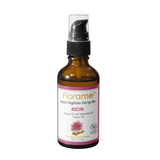 5.0 (4)
5.0 (4)Florame Organic Castor Oil, 50 ml
-10%- Recommended for dry hair
- Perfect for treating the ends of the hair
- Cold-pressed oil
$7.61 $8.49 ($152.27 / l)Delivery by December 18
-
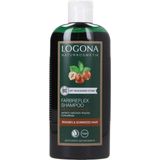 4.0 (36)
4.0 (36)LOGONA Colour Care Shampoo - Brown-Black, 250 ml
-10%- Mild cleansing
- Revitalizes the colour intensity
- For vivid gloss & bounce
$7.47 $8.31 ($29.89 / l)Not available at the moment
-
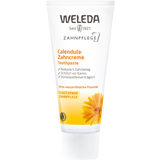 4.4 (63)
4.4 (63)Weleda Calendula Toothpaste, 75 ml
-10%- With fresh-tasting fennel
- Protects against plaque build up
- For antiseptic and healing oral hygiene
$4.39 $4.88 ($58.50 / l)Delivery by December 18
-
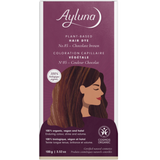 4.0 (26)
4.0 (26)Ayluna Chocolate Brown Herbal Hair Dye, 100 g
-10%- For medium blonde to dark brown hair
- For grey coverage
- 100% organic
$10.51 $11.72 ($105.11 / kg)Delivery by January 05
Magazine Articles:
Discover Ecco Verde:
-
Get at least 1 free sample
per order -
Delivery in 3 business days.
More than 19.800 products
Secure payments
with SSL encryption technology
